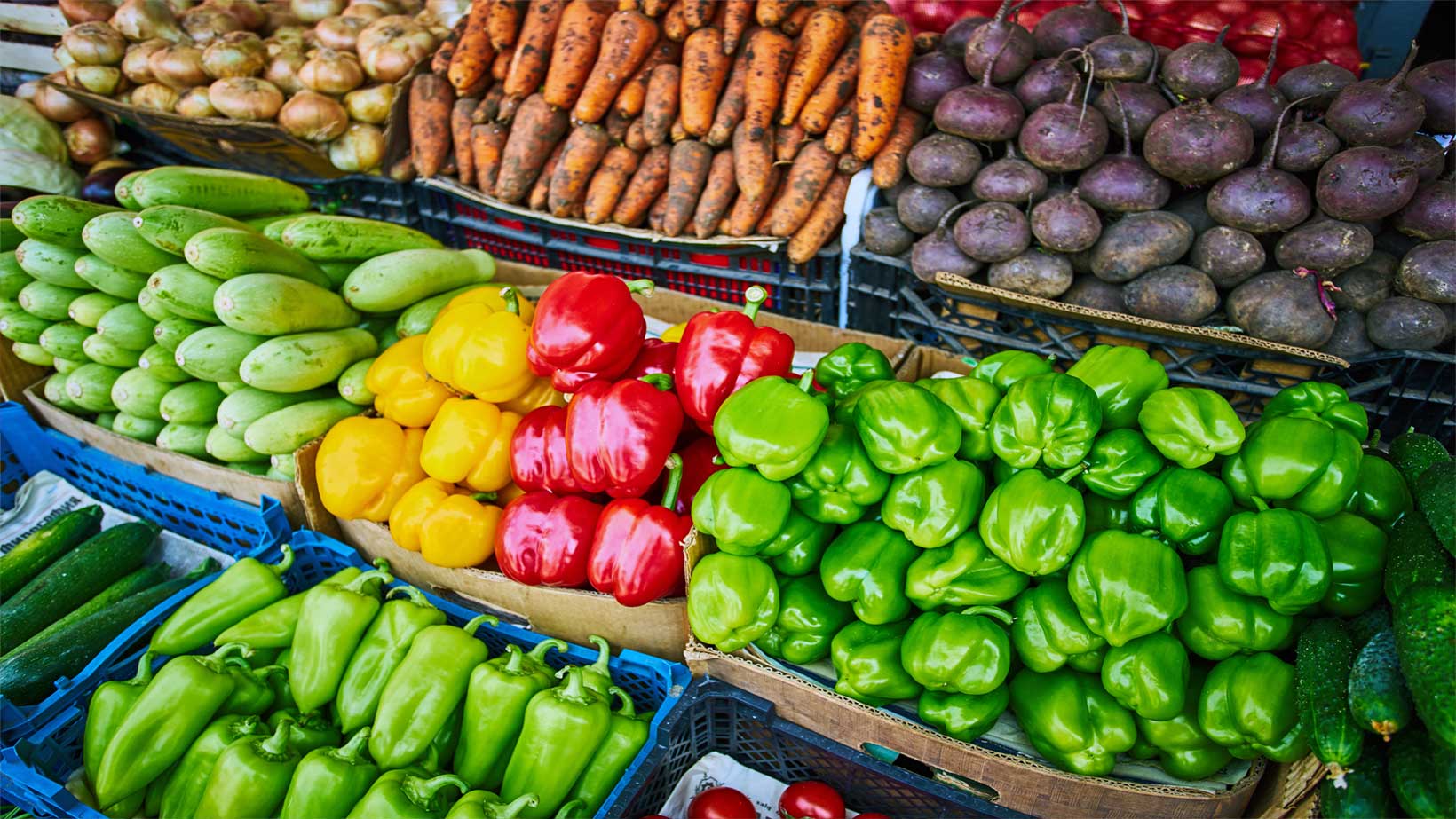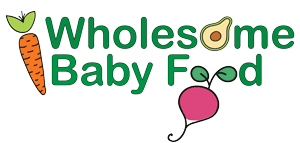
One of the great advantages of making your own homemade baby food is that you get to choose exactly what goes into it—which means you control the quality. Below I’ll give you my tips on choosing the best ingredients your family can afford. We never ate 100% organic when the kids were babies and we don't to this day. We pick and choose as our budget and availability allow.
Should Only Organic Ingredients Be Used to Make Baby Food or Feed Kids?
The decision of whether or not to use organic foods to make baby food is an entirely personal one. Many parents will purchase only organic foods to feed their babies as well as their whole family. The benefit in making baby food with organic foods is that baby’s exposure to conventional chemical pesticides and fertilizers is almost eliminated. During their first twelve months of life, babies consume a higher amount of fruits and vegetables relative to their weight, and in theory, this means they would be consuming more of the pesticides and chemicals found in conventional foods. It is a good idea to try to offer your baby as many organic foods as possible during their first twelve months to reduce the exposure to synthetic pesticides and fertilizers.
If you can’t afford to feed your whole family a 100 percent organic diet, it’s still beneficial to purchase and cook some organic foods. There are parents who use organic foods solely for baby’s first food ingredients. On the other hand, many parents who make their own baby food will never buy any organic foods. While purchasing and cooking organic foods has many benefits, just cooking homemade foods for your baby gives your baby many advantages. If you are unable to find organic produce or simply cannot afford the higher price of organic food, you should still use fresh fruits and vegetables when making your own baby food.
Organic vs. Conventional: Be Aware of the Differences
Organic foods or conventional foods? It’s a question that causes a lot of anxiety for parents, especially when it’s time to start their babies on solid food. Which type of food is more nutritious, and which is safer to feed to babies? To understand the differences, let’s take a look at the two types of food growing practices:
- Organic food: This is food that has been grown without the use of chemical pesticides, synthetic fertilizers, sewage sludge, or GMO/bioengineered seeds. Organic meats, dairy, and eggs must come from animals that have not been given antibiotics or growth hormones. The feed the animals eat cannot contain animal by-products and must be vegetarian. It must not have GMO grains and cannot have been grown with conventional pesticides. The feed must also be free from antibiotics.
- Conventional food: Conventionally grown food is or may be grown with chemical pesticides and fertilizers and also may be GMO or bioengineered. Conventional meats are from animals that may have been given growth hormones and/or antibiotics. The animals may also be fed food that contains animal by-products, and the food may be grown from GMO or bio-engineered grains and seeds. The grain-based feed can also have been treated with pesticides and/or fertilizers. If you do choose to go the organic route, there are a few different organic labels to watch for.
The USDA uses these standards to label organic foods:
“100 percent organic.” This phrase can be used to label any product that contains 100 percent organic ingredients (excluding salt and water, which are considered natural). Most raw, unprocessed farm products can be designated “100 percent organic.” Likewise, many value-added farm products that have no added ingredients—such as grain flours, rolled oats, etc.—can also be labeled “100 percent organic.”
“Organic.” “Organic” can be used to label any product that contains a minimum of 95 percent organic ingredients (excluding salt and water). Up to 5 percent of the ingredients may be non-organic agricultural products that are not commercially available as organic and/or non-agricultural products that are on the National List.
“Made with organic ______.” This phrase can be used to label a product that contains at least 70 percent organically produced ingredients (excluding salt and water). There are a number of detailed constraints regarding the ingredients that make up the non-organic portion. Specific ingredient listings. For products containing less than 70 percent organic ingredients, the specific organic ingredients may be explained in the ingredient list—for example, “Ingredients: water, barley, beans,
organic tomatoes, salt.”
Pick and Choose: Getting the Most Value for Your Organic Buck
If you like the idea of using organic ingredients but can’t afford to feed your family a 100 percent organic diet, the Environmental Working Group (EWG) creates a yearly list of the twelve conventionally grown produce items with the highest levels of pesticides (“The Dirty Dozen”). On the flip side, they also create a list of “The Clean Fifteen,” which are the fifteen produce items that they’ve found have the lowest levels of pesticides. You can save money and still limit your family’s exposure to pesticides by spending more for organic versions of the Dirty Dozen and buying conventional versions of the Clean Fifteen.
Here are their lists for 2018. You can also check their website at www.ewg.org/foodnews for yearly updates.
The EWG’s Dirty Dozen of 2018
- Strawberries
- Spinach
- Nectarines
- Apples
- Grapes
- Peaches
- Cherries
- Pears
- Tomatoes
- Celery
- Potatoes
- Sweet bell peppers
The EWG’s Clean Fifteen of 2018
- Avocados
- Sweet Corn*
- Pineapples
- Cabbage
- Onions
- Sweet peas (frozen)
- Papayas*
- Asparagus
- Mangoes
- Eggplant
- Honeydew melon
- Kiwifruit
- Cantaloupe
- Cauliflower
- Broccoli
*Note: A small amount of sweet corn and papaya sold in the United States is produced from genetically modified seeds. If you want to avoid genetically modified produce, purchase organic varieties of this produce.

